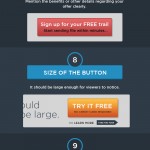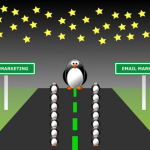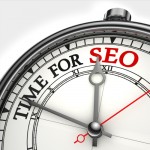Website development is a complicated process with a multitude of aspects to consider such as user experience, performance and increasing ROI. Development of an enterprise website is a large-scale and complex job, however, e-commerce site represents its own set of challenges. Since users visit online stores to learn about the products and purchase them, developers will want to do everything they can to make this process as simple as possible and intuitive. However, along with the usability, there are few important elements that e-commerce web developers in Melbourne will want to be sure to consider during the development process.
Responsive Design
As the use of mobile devices to access websites is increasing, so making e-commerce websites responsive is essential. If your e-commerce website is optimised for mobile, it provides best user experience and not only this, it also helps to increase ROI. Digital marketing agencies in Australia take advantage of this responsive design by implement backend site management which is easier to do with responsive design, ups the SEO strategy and hence increase sales. Implementing responsive design is important for the success of an e-commerce site.
Prominent Main Menu
Finding products with ease is one of the most important factors of an e-commerce store. The website’s skeletal structure, the navigation, plays a big role in the success or failure of the e-commerce website. The main menu should be such that it is easy to scan through and lead users to various website sections in just two or three clicks. Prominent menu means better user experience and allows users to stay longer and visit more often. This, in turn, boosts conversion rate and improve search engine optimisation.
Call-To-Action
You might have spent time tweaking the storefront and feel and applied growth hack initiatives to get traffic on your e-commerce web store, but why any visitors aren’t adding products to their cart? The reason could be, the visitors are finding it hard to navigate through your store or they simply do not know where to click. This is why implementing call-to-action buttons are essential for all e-commerce stores. The CTAs make it easier for the users to find what they are looking for and guides them what to do next. As the ultimate goal of your website is to direct visitors into the funnel of buying cycle, the common CTAs like schedule a demo, buy now, learn more or free trial will tell them what to do next so that they do not get overwhelmed. However, you need to ensure that CTAs are done right and turn your website into sales or lead generation engine.
Guest Checkouts
E-commerce stores often require users to create an account in order to complete the purchase process, as this allows for follow-up communication that encourages future sales, as well as help businesses, track customer’s demographic information to analyse sales. However, it is important to remember that everybody doesn’t want to go through this process. Customers who often visit and buy products from your online store would want to register and get benefits of having an account such as saving their information for future purchases and receiving notifications about upcoming sales and offers, but it is still a good idea to provide an option for people who just want to make a onetime order. Irrespective of this, you might want users to create an account, then try designing the purchase process in such a way that allows customers to complete a guest checkout and upon completion helps them in creating an account using the information that they just entered.
Keeping these aspects of an e-commerce site in mind during development will help ensure that you are providing the best experience for your customers as well as keeping your product data organised and ensuring that search engine optimisation strategy is in place.













Leave a Reply